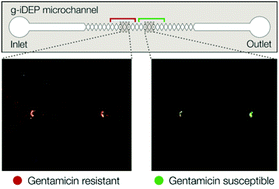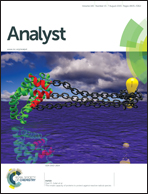Biophysical separation of Staphylococcus epidermidis strains based on antibiotic resistance
Abstract
Electrophoretic and dielectrophoretic approaches to separations can provide unique capabilities. In the past, capillary and microchip-based approaches to electrophoresis have demonstrated extremely high-resolution separations. More recently, dielectrophoretic systems have shown excellent results for the separation of bioparticles. Here we demonstrate resolution of a difficult pair of targets: gentamicin resistant and susceptible strains of Staphylococcus epidermidis. This separation has significant potential implications for healthcare. This establishes a foundation for biophysical separations as a direct diagnostic tool, potentially improving nearly every figure of merit for diagnostics and antibiotic stewardship. The separations are performed on a modified gradient insulator-based dielectrophoresis (g-iDEP) system and demonstrate that the presence of antibiotic resistance enzymes (or secondary effects) produces a sufficient degree of electrophysical difference to allow separation. The differentiating factor is the ratio of electrophoretic to dielectrophoretic mobilities. This factor is 4.6 ± 0.6 × 109 V m−2 for the resistant strain, versus 9.2 ± 0.4 × 109 V m−2 for the susceptible strain. Using g-iDEP separation, this difference produces clear and easily discerned differentiation of the two strains.


 Please wait while we load your content...
Please wait while we load your content...